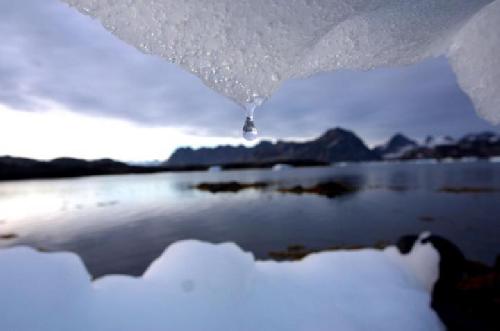HANOVER, N.H. - Global climate models are essential for climate prediction and assessing the impacts of climate change across large areas, but a Dartmouth College-led team has developed a new method to project future climate scenarios at the local level.
The method can be used in any mountainous or hilly area with a reasonable number of weather stations measuring temperature and precipitation.
The findings appear in the Journal of Hydrometeorology. A PDF is available on request. The team includes researchers from Dartmouth, the University of Vermont and Columbia University.
 Jonathan Winter, an assistant professor of geography at Dartmouth College, and his collaborators, have developed a new method to project future climate scenarios at the local level. Credit: klem@s
Jonathan Winter, an assistant professor of geography at Dartmouth College, and his collaborators, have developed a new method to project future climate scenarios at the local level. Credit: klem@s
Global models can simulate the earth's climate hundreds of years into the future, and have been used to evaluate climate impacts on water, air temperature, human health, extreme precipitation, wildfire, agriculture, snowfall, and other applications. But both global climate models -- and global models that have been downscaled to increase the data's spatial resolution, analogous to increasing the number of pixels used in a digital image -- aren't accurate at local and regional levels. That makes them insufficient for modeling of potential climate impacts on small watersheds, such as those in the mountainous northeastern United States, which are a critical socioeconomic resource for Vermont, New York, New Hampshire, Maine and southern Quebec.
To address this limitation, the researchers developed a method to generate high-resolution climate datasets for assessing local climate change impacts on the Lake Champlain basin in Vermont, including changes in water quantity and quality flowing into Lake Champlain. They did this by finding the relationships between temperature and elevation and between precipitation and elevation, and then using those relationships to create a high-resolution temperature and precipitation dataset from a relatively coarse-resolution dataset and high-resolution elevation data.
"Compared to weather station observations, our high-resolution dataset better captures both temperature and precipitation, especially in cases where there is a large error in the coarse-resolution dataset and the elevation adjustment is large," says lead author Jonathan Winter, an assistant professor of geography whose research explores climate prediction and the impacts of climate variability and change on water resources and agriculture. "Improved climate datasets at higher resolutions make assessments of climate variability and climate change impacts both more accurate and more location specific."
source: Dartmouth College